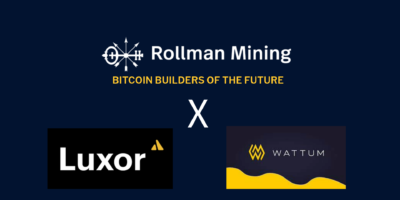
The upcoming Bitcoin ETF approval in the United States is akin to an 800-pound gorilla in…
You're reading
Posted at September 11, 2023 | Post by Victor Rollman
Transitioning from Oil to Bitcoin: Oman’s Ambitious Plan to Secure 7% of Hashrate by June 2025

In a rapidly changing global landscape, where nations are fiercely competing for dominance in the Bitcoin mining industry, Oman has quietly emerged as a formidable contender with bold aspirations. The country aims to command an impressive 7% share of the worldwide Bitcoin hash rate by June 2025. This isn’t just a lofty ambition; it’s substantiated by data presented in the latest report from Bitcoin mining expert Jaran Mellerud.
Historically reliant on oil as its economic cornerstone, Oman is situated on the southeastern coast of the Arabian Peninsula, bordered by Saudi Arabia, the United Arab Emirates, and Yemen. Oman has ranked as the sixth-largest oil producer per capita globally, but winds of change are blowing, and Oman is now directing its focus toward Bitcoin mining.
Oman’s Rise as a Bitcoin Mining Powerhouse As of September 2023, Oman boasts approximately 20 MW of operational mining capacity. This includes the pilot projects of Exahertz and Green Data City, which have capacities of 11 MW and 1.2 MW, respectively. Additionally, there are a few megawatts of unlicensed mining operations. With an efficiency rate of 27.5 J/TH, this 20 MW of power consumption translates to 0.7 EH/s, granting Oman a 0.2% slice of the global hash rate at present.
By the close of 2023, Oman’s cumulative hash rate may reach 4 EH/s, accounting for 0.9% of the Bitcoin mining network, according to Mellerud. This anticipated growth is primarily driven by Exahertz’s expansion to 100 MW.
Nevertheless, this growth trajectory doesn’t end there. Mellerud’s projections for the latter half of 2024 indicate that Exahertz will scale up to 275 MW, generating 9.9 EH/s. Concurrently, Green Data City intends to commission 150 MW, yielding an estimated 5.5 EH/s. Combined, these efforts could propel Oman’s total hash rate in the latter half of 2024 to 15.7 EH/s, equating to an estimated 2.6% of the network.
Exahertz and Green Data City harbor long-term visions of scaling up to 800 MW and 400 MW, respectively. Assuming an average efficiency of 22 J/TH, these projects’ combined 1,200 MW could potentially produce a total of 54.8 EH/s. This would represent an estimated 7% of the Bitcoin hash rate by June 2025, as per Mellerud’s estimates, noting that both companies have not disclosed a specific timeline for their full expansion.
Governmental Backing The role of the Omani government in this endeavor cannot be underestimated. They have cultivated a favorable environment for Bitcoin mining operations. Currently, only two companies, Exahertz and Green Data City, hold licenses to develop and operate Bitcoin mining facilities in the country.
In late August, H.E Sheikh Mansour Bin Taleb Bin Ali Al Hinai, Chairman of Oman’s Authority for Public Services Regulations, publicly expressed the government’s support for privately-owned Bitcoin mining facilities, which are poised to attract investments exceeding $1.1 billion. He stated, “this initiative aligns with our goal to diversify our economy, integrating modern technologies while upholding our commitment to ethical and sustainable practices.”
Oman’s climate, particularly in regions like Salalah, offers a natural advantage for Bitcoin mining. In contrast to the scorching heat experienced in many Middle Eastern nations, Salalah benefits from a microclimate with cooler temperatures, especially during the monsoon season. This climatic advantage reduces cooling expenses and enhances mining operation efficiency.
Furthermore, the Omani government has set a target of generating 30% of its electricity from renewable sources by 2030. The most viable path to achieving this goal is through substantial development of Oman’s abundant solar resources, an ideal match for Bitcoin miners who can capitalize on surplus energy during network fluctuations.
Oman’s strategic approach to Bitcoin mining is evident through its infrastructure development, government support, and utilization of natural advantages. Mellerud’s report paints a promising future for the nation in the Bitcoin mining sector. If these projections materialize, Oman, in collaboration with other Middle Eastern nations, could command a 15% share of the global Bitcoin mining hash rate in the coming years.

Curious about Bitcoin?
How about mining this new and asymmetric asset?
Find out how it works.
Book your edge now!
www.rollmanmining.com

The upcoming Bitcoin ETF approval in the United States is akin to an 800-pound gorilla in…

Shenzhen has become home to an industrial park established to promote China’s central bank digital currency…

Introduction Bitcoin mining has become a highly competitive and lucrative industry, with numerous companies vying for…